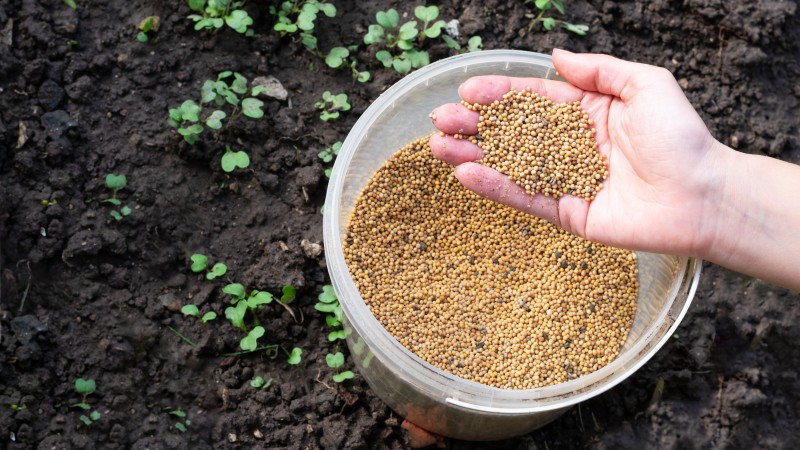Mustard seeds: Canadian crop estimated at 180,000 mt
July 18, 2024 at 7:56 AM ,
Der AUDITOR

Good crop prospects put pressure on prices
Favourable weather conditions in Canada and the USA have ensured a much better start to the mustard seed season than in previous years. Canada's acreage is also said not to have declined as much as originally expected. Meanwhile, market players are reporting low demand, making it difficult for traders to maintain higher prices.
Most recently, Agriculture and Agri-Food Canada had forecast a planted area of 232,000 ha, and with an average yield, production should be able to achieve a result of 180,000 mt, an increase of 5.3% compared to last year. Thanks to carry-over stocks from the 2023/2024 season, total availability is expected to increase by 19.6% year-on-year to 269,000 mt. Exports of 110,000 mt are currently expected for the 2024/2025 season, with prices expected to average CAD 930/mt. Due to the increase in the import tax on agricultural products from Russia on 1 January – including mustard seeds – Canadian mustard seeds could become more interesting for buyers from the EU this year.
|
Mustard seeds, Canada |
2022/23 |
2023/24 |
Diff. |
2023/24 |
2024/25 |
Diff. |
|
Area sown (ha) |
225,000 |
258,000 |
14.7% |
258,000 |
240,000 |
-7.0% |
|
Area harvested (ha) |
219,000 |
251,000 |
14.6% |
251,000 |
232,000 |
-7.6% |
|
Yield (mt/ha) |
0.74 |
0.68 |
-8.1% |
0.68 |
0.78 |
14.7% |
|
Production (mt) |
162,000 |
171,000 |
5.6% |
171,000 |
180,000 |
5.3% |
|
Imports (mt) |
11,000 |
15,000 |
36.4% |
15,000 |
9,000 |
-40.0% |
|
Total supplies (mt) |
189,000 |
225,000 |
19.0% |
225,000 |
269,000 |
19.6% |
|
Exports (mt) |
110,000 |
100,000 |
-9.1% |
100,000 |
110,000 |
10.0% |
|
Domestic consumption (mt) |
40,000 |
45,000 |
12.5% |
45,000 |
44,000 |
-2.2% |
|
Carry-over stocks (mt) |
40,000 |
80,000 |
100.0% |
80,000 |
115,000 |
43.8% |
|
Avg price in CAD/mt |
2,140 |
1,300 |
-39.3% |
1,300 |
930 |
-28.5% |
|
Agriculture and Agri-Food Canada |
||||||
EU imports down by almost 7%
Canada already ranks second among the most important trading partners for mustard seed shipments to the EU. However, deliveries to the EU fell by 23.3% to 25,785 mt last season (July 2023 to June 2024). Meanwhile, imports from Russia rose by more than a third to 66,868 mt during this period and imports from Ukraine increased by as much as 139.7% to 20,599 mt. In total, around 118,570 mt of mustard seeds were imported into the EU from third countries in the 2023/2024 season, a decrease of 6.7% compared to the previous year. The main buyers within the EU during this period were Germany (42,260 mt), Poland (41,780 mt) and Belgium (19,320 mt).
|
EU mustard seed imports, in mt |
|||
|
Supplier |
2022/23 |
2023/24 |
Diff. |
|
Russia |
49,115 |
66,868 |
36.1% |
|
Canada |
33,603 |
25,785 |
-23.3% |
|
Ukraine |
8,595 |
20,599 |
139.7% |
|
Kazakhstan |
3,517 |
4,115 |
17.0% |
|
India |
1,615 |
382 |
-76.3% |
|
Moldova |
883 |
273 |
-69.1% |
|
Other |
29,776 |
548 |
-98.2% |
|
Total |
127,104 |
118,570 |
-6.7% |
|
GD TAXUD Surveillance System, provisional data / Jul-Jun 12075090 Mustard seeds, whether or not broken (excl. for sowing) |
|||
View more
- price charts on oilseeds, grains, nuts, dried fruit, spices and more





